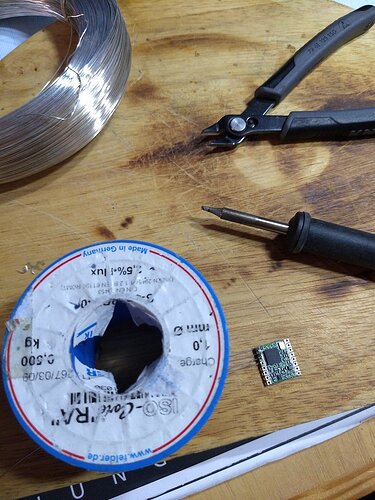As already told on the last and latest IoTHappyHour, I had some experience in working with SigFox. For those who don’t know: It was basically the competition to LoRa, however with providers similar to Cellphone companies and “company installed cellular towers”. If you look at the coverage map, this technology is quite well established in europe - but not yet existing in the US: Coverage | Sigfox
And its also a bit sad, because you have no control over your data - let alone having all the stuff open source and enable the user to create their own gateways…
So… after the long run I thought: “Maybe I try LoRa too”. The only thing that really kept me away, was cost: I friend of mine actually asked me today: “Why the hell is this stuff so expensive?” - and I actually have no answer for this. Spoiled by ESP8266 and other modules which run for just a buck per module - and are not really expensive as devboards, LoRa ones quickly run up to 20 bucks or more - per piece. Thats without a sensor or anything. Time will tell if this can get down  .
.
However - I thought the time is right. And right it is - the new SX1303 module backed Gateway has been introduced in form of the RAK5146 - the latest and greatest in gateway technology. I meant - if I am spending more than 100 bucks for a module, I also wanted to have the latest one.
The problem with technology, especially “bleeding edge” one is the fact that for most of the time, nothing is “turn key” and ready. While the “old” SX1302 / RAK2287 module came with its own RPi Hat and everything, this module is very naked. There is a high chance that the SPI version of the module might work with the RAK2287 RPi Hat - however, the SX1303 includes a new technology called L(isten)B(efore)T(alk) to reduce crosstalk. And LBT is only available on the USB version, which is currently not supported for balena. And it does NOT work with the RAK2287 RPi Hat, which does only connect the SPI bus (for the module), the UART (for the GPS module) and power.
(Basically adding a RAK USB module to the SPI/RAK2287 hat might either not work or damage both the RPi and the module, so please don’t try that).
The first thing after ordering the RAK5146 with USB, LBT and GPS was trying to find the “missing link” to even be able to plug this module into something and connect it to the PC. Luckily, Mini PCI-Express does support multiple protocols, among one is just basic USB. And as the RAK5146 does work with that, I found these two converters:
Module One
Ali -
Amazon (de) -
Module Two / Hat
Amazon (de)
Basically both are Mini PCI-Express USB to USB converters.
In theory, you just need to plugin the RAK5146 (USB version) and also plugin a Micro USB/USB C to the other side - and the other end to you Raspberry Pi and it will make a connection.
Please be aware:
a) the first module comes with antennas. They are for LTE/GSM and might kill your module, as its with the incorrect wave length. In EU, e.g., I need 868 MHz ones and are salvaging some antennas from my SigFox devboards for the LoRa Signal. the GPS module build into the RAK5146 with GPS is actually a ZOE-M8Q - thats not a pure GPS, but a GNSS receiver. For the second antenna, you will need to buy an external GNSS antenna, if you want to use it with this enclosure.
However, I choose the second / head version one. Why? Because its cheaper and could be mounted onto the RPi. Also, both antenna connectors look like RP-SMA ones instead of the SMA antenna I got around here, so… I would need to replace them anyway. Also, its smaller, got USB-C as connector and can be easily mounted - and if I want an enclosure, I just print one 
So, currently in the mail pipe is the RAK5146 USB with LBT and GPS, the RPi Hat, additional “pigtail to SMA” connectors, a short 15 cm USB-C to USB-A cable, an external, active GNSS antenna and 2 CubeCells - because I am inpatient. I also received 6x RFM95W modules today, which I can use to design my own sensors and will probably abuse a big part of the Tinynode design - if I find the time.
Now all we need is to wait about two weeks for the stuff to arrive, plug everything together and see what works - and what doesn’t 
Cheers,
Nico


 .
.







